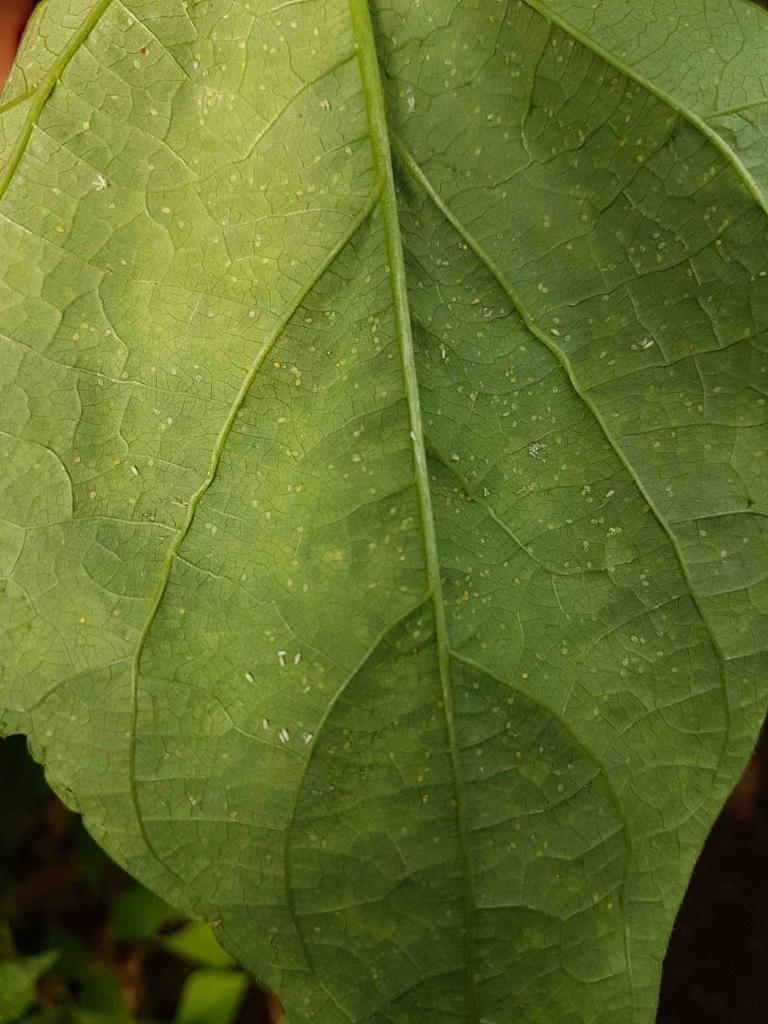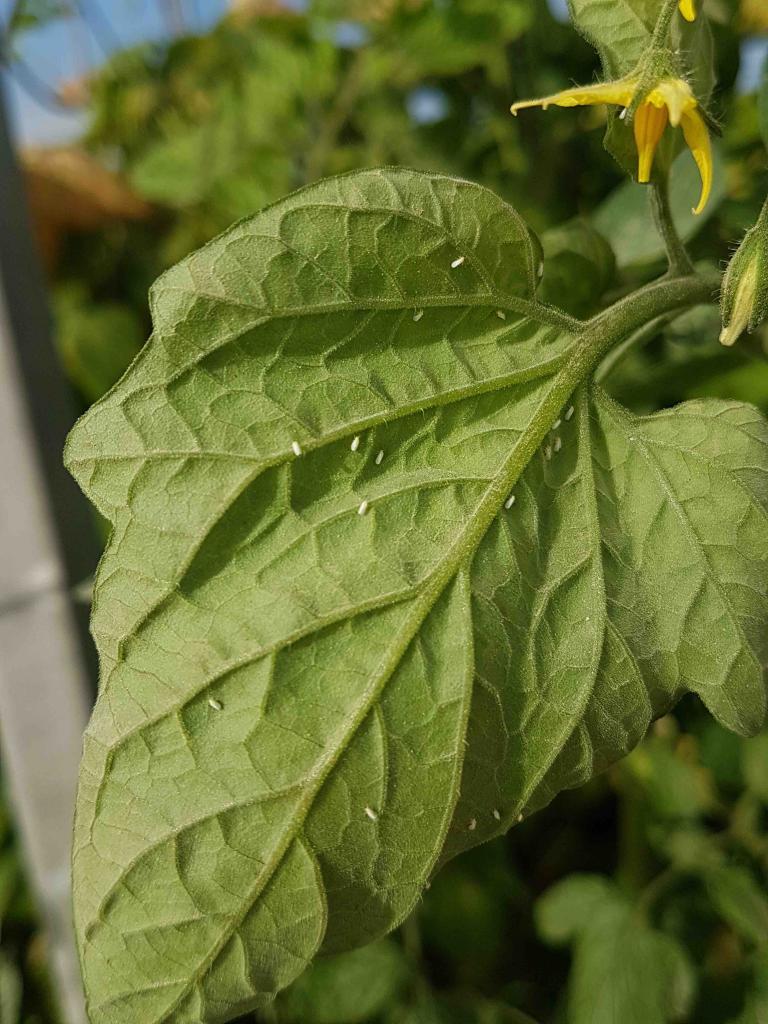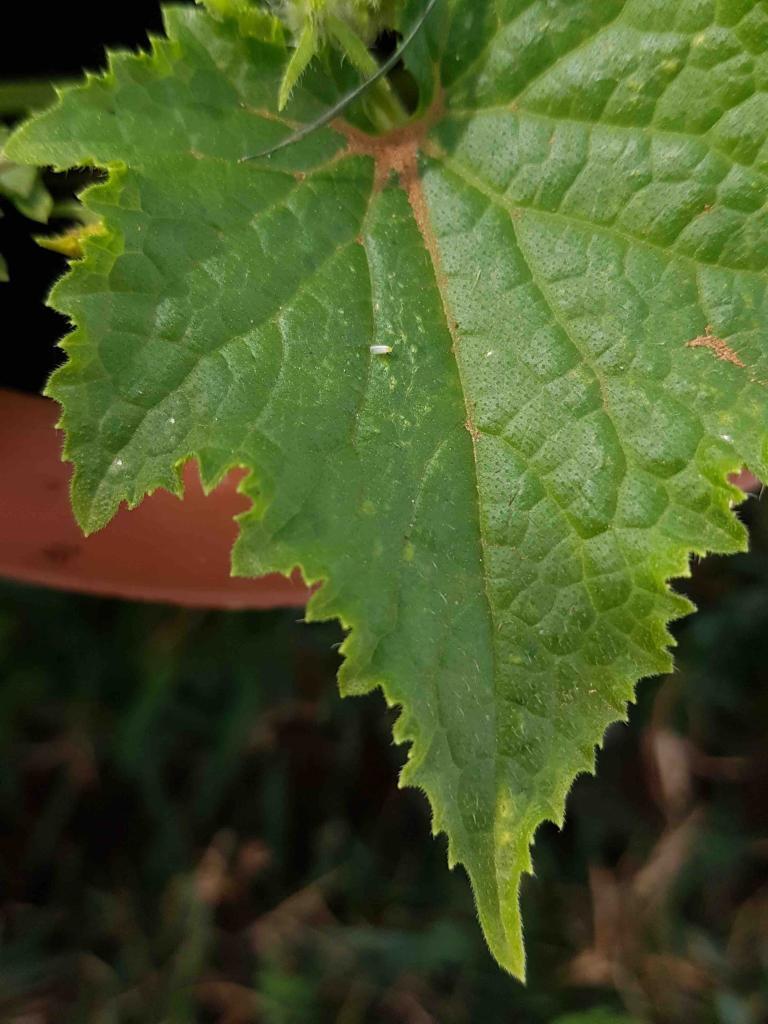श्वेत किटाणु
Tomato, pepper, squash, melons, cucumber (and other cucurbitaceae members), broccoli, cauliflower, cabbage (and other brassica members), cotton, carrots, potato, and fresh herbs such as basil and mint
Whitefly is a multi-host with considerable differences that exist in appearance between adult and nymph stages. Females can lay dozens of eggs, usually on the underside of leaves. Nymphs feed by stabbing into the plant with their mouth-parts, sucking up sap from the phloem, and excreting honeydew (a sugar-rich substrate that promotes the growth of sooty mold.) The adults are white and capable of flying, hence the name.
Damage to hosts is caused directly from feeding and indirectly from honeydew. However, their ability to spread viruses have the greatest economic impact. Whitefly vector plant viruses like Begomoviruses, which is a group of plant viruses such as TYLCV in tomatoes and CYSDV in cucurbits. Whiteflies transmit Begomoviruses to host plants.
अंदरूनी ढांचे बढ़ाएं : ढांचे को बंद और जालियों को छिद्र-मुक्त रखें।
स्वच्छता : खरपतवारों, पौधे के अवशेषों, क्षतिग्रस्त भागों, अवांछित पौधों की वृद्धि, और आस-पास के खेती न किये गये क्षेत्रो और असुरक्षित पोधों को हटा कर आस-पास के क्षेत्र साफ रखें।
कीड़ों की आबादी को ट्रैक करने के लिए ट्रैप जैसी पेस्ट निगरानी तकनीकों का उपयोग करें।
प्राय: श्वेत किटाणू की आबादियों का नियंत्रण साइपेर्मेत्रिन्, डेल्टामेट्रीन, बिफ़ेन्त्रिन्, डाइफेंथिउरोन, थियमेतोक्साम्, इमिदाक्लोप्रिद, एसेतमिप्रिड्, बुप्रोफ़ेज़िन, स्पाइरोमेसीफ़ेन, सियांतरनिलिपरोल, स्पाइरोटेट्रामत, और सिंथेटिक टर्पीन चेनोपोडिउम के रस जैसे कीटनाशकों के बारंबार संप्रयोग द्वारा किया जाता है।
अज़ादिराच्तिन, फैटी एसिड के पोटैशियम लवण, बोवेरिया बसियाना स्ट्रेन GHA नीम तेल, और अन्य plant oils.
अंबलिसीउस स्विरस्की एक व्यावसायिक रूप से उपलब्ध हिंसक घुन है जो श्वेत किटाणू आबादियों का प्रभावशाली ढंग से नियंत्रण करने में सक्षम है।
*Names marked in red are considered to be highly poisonous to beneficial insects.
*Names marked in green are considered to be organic and IPM (integrated pest management) compatible.
Image Gallery


